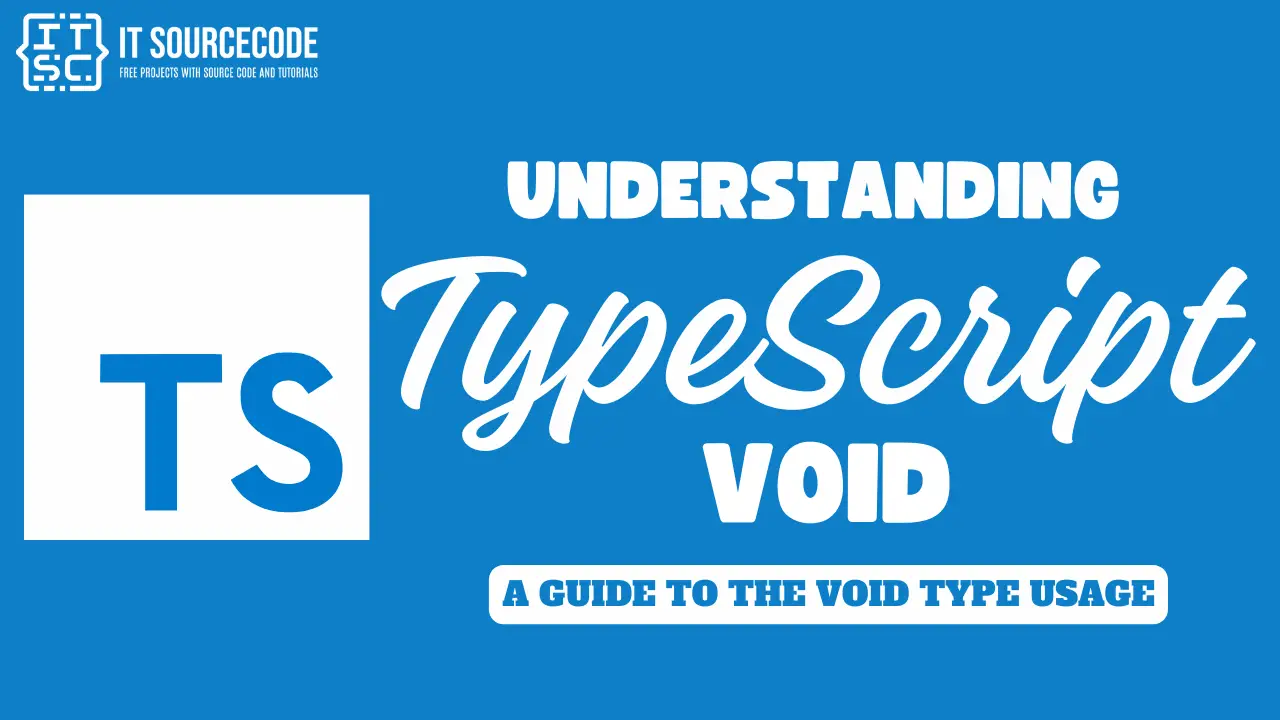What is “void” in TypeScript?
A void in TypeScript is a type that represents the absence of a return value.
It’s used as the return type for functions that do not return any value.
When you declare a function with a void return type, it means that the function is not expected to return anything.
In simple words, the void type does not return any value, or it returns undefined.
Here’s an example:
function greet(): void {
console.log('Hi, welcome to Itsourcecode!');
}Please bear in mind that a variable declared with the void type cannot hold any value, with the sole exceptions being undefined or null (provided that the –strictNullChecks option is not enabled in your TypeScript configuration).
How to use TypeScript void?
Using the void type is a wise strategy for maintaining clear and type-safe code. It’s primarily used in function declarations to specify that the function does not return a value.
It prevents the inadvertent assignment of a non-returning function’s output to a variable that is meant to store a value.
Here’s a step-by-step guide on how you can use void type in TypeScript:
Step 1: Define a Function with No Return Value
When declaring a function that does not return any value, use the void type as its return type.
function greetings(): void {
console.log('This function does not return anything.');
}Step 2: Implementing Void Functions
Write the function’s logic without using the return statement, or if you do use it, do not return any value.
function logError(): void {
console.error('An error arise!');
return; // No value is returned
}Step 3: Void in Callbacks
Use ‘void‘ for the return type of callback functions to indicate that they should not return anything.
function fetchData(callback: (data: string) => void): void {
// Simulate fetching data
setTimeout(() => {
callback('Data fetched successfully');
}, 1000);
}Step 4: Arrow Functions with Void
For arrow functions that do not return a value, specify ‘void‘ as the return type.
const logCompletion = (): void => {
console.log('Task completed.');
};Step 5: Avoid Assigning Void Functions
Do not assign the result of a ‘void‘ function to a variable, as it does not return any value.
let result = greetings(); // This is incorrect, as greetings returns voidStep 6: Void with Promises
If a function returns a Promise that resolves with no value, you can use Promise.
function asyncOperation(): Promise {
return new Promise((resolve) => {
// Perform async operation
resolve();
});
}By following these steps, you can effectively use the void type in TypeScript to ensure your functions are used as intended and to maintain clarity in your codebase.
Please take note that, void is all about signaling the absence of a return value, making your code’s intentions explicit and clear to other developers.
Conclusion
The void type in TypeScript is a useful tool for developers to ensure that functions are used as intended and to maintain clarity within the codebase.
It serves as a clear signal that a function is not meant to return any value, thereby preventing any unintended behaviors or assignments.
By understanding and implementing the void type as outlined in this article, you can write more predictable and type-safe code.
I hope this article has given you some insights and helped you understand the TypeScript void.
If you have any questions or inquiries, please don’t hesitate to leave a comment below.

